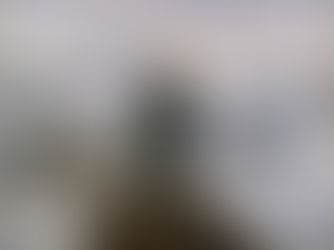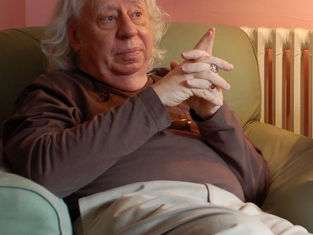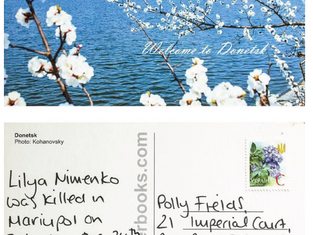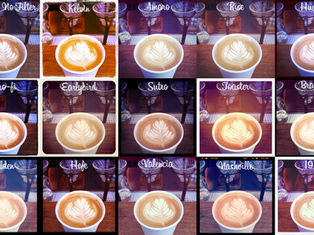top of page
Articles


Judges, Carpenters, and Computers: A Craft-Based Perspective on Judicial Decision-Making
Is a judge more like an artist or a scientist? This seems to be a trick question, and yet extreme versions of both perspectives have, at one time or another, been advocated. For instance, James Boyd White, often regarded as the founder of the ‘Law and Literature’ movement, considered lawyers to be artists, and the solving of complex legal problems to be akin to high art.[1] Conversely, Christopher Columbus Langdell, once Dean of Harvard Law School, believed that ‘law is a sci

Reuben Andrews
13 min read


Arts, Excellence, and Warranted Self-Respect
Funding for the arts is quite frequently commended by political philosophers and political pundits—whom I shall call ‘edificatory perfectionists’—as a policy that can incline people to improve their ways of life by taking advantage of cultural opportunities.[1] By contrast, this article advocates such funding because it can promote the occurrence of outstanding achievements and thereby help to bring about the conditions under which every citizen can be warranted in feeling a

Matthew H Kramer
44 min read


Ways of (Legal) Seeing: Law and the Interdisciplinary Imagination
In the opening essay of Ways of Seeing , John Berger writes, ‘We only see what we look at. To look is an act of choice. As a result of...

Elizabeth Huang
7 min read


How to Be an Art Critic
Since I am now 87 years old, I have inevitably formed certain views about what I do, or try to do, both about writing in general, and...

Edward Lucie-Smith
6 min read


Fatal Fabergé Eggs: Ruinous Symbols of the Russian Empire
Fig 1. The Danish Palaces Egg (House of Fabergé 1890). James Petts, Wikimedia Commons. <https://commons.wikimedia.org/wiki/File:Faberge_e...

Danielle Jump
9 min read


Installation Address, 26 August 2020
The months since my investiture have been remarkable in a number of ways. First and foremost, the continuing pandemic has changed the way my office engages with the public, replacing the in-person contact of what is traditionally a highly social role with virtual gatherings. At the same time, I find myself in a unique position to see and celebrate the innovation and strength with which individuals and organizations are responding to the challenges of the day. My goal, as we m

Salma Lakhani
10 min read


Global Crises and the Community of Democracies
There are certain global issues that pay no attention to national borders or natural barriers: climate change; the COVID-19 pandemic; nuclear weapons proliferation; and a migration and refugee crisis. These challenges can only be met by collective action. This demand binds every country to a multilateral system, but the current global framework is showing its age 76 years after the creation of the United Nations. To be sure, the network should keep out no one: even authorit

Thomas Garrett
13 min read


The Sustaining Cosmos
There are more things in heaven and earth, Horatio, Than are dreamt of in your philosophy. —William Shakespeare, Hamlet (1.5.167–68),...
Jonathan Jones
7 min read


Composition as Political Action: In Conversation with Dr Laura Bowler
As described by The Arts Desk , Dr Laura Bowler is 'a triple threat composer-performer-provocatrice'. She is the vocalist in Ensemble...

Filippo Turkheimer
12 min read


Towards a Cosmic Humanism
When writing critically about the Russian avant-garde, one finds oneself inexorably drawn towards cosmism, as inexorably as the Earth...

Boris Groys
10 min read


Teaching Art Law: In Conversation with Vittoria Mastrandrea
Vittoria Mastrandrea is writer and presenter of the Christie’s Education Art Law course and a PhD candidate in Law at the London School...

Alexander (Sami) Kardos-Nyheim
4 min read


Art in Exile at Home: The National Palace Museum, Taiwanese Identity, and China’s Imperial Collection
Between December 1949 and February 1950, three shipments, carrying a total of 3,824 crates of artefacts and artworks from the Qing...

Jean-Michaël Maugüé
11 min read


Beyond Repatriation: The Need for Sensitive Museum Display of Indigenous Objects
Many significant cultural objects have found uncomfortable homes in museums across the world.[1] They have been trapped behind glass,...

Piper Whitehead
13 min read


What Is It that Makes You Tremble?
What is it that makes you tremble?’[1] Jacques Derrida poses this question to discuss the vulnerability that we fear. We see...

Madeleine Nina King
10 min read


Enclosing or Democratising the AI Artwork World
Introduction Artificial intelligence (AI)-enabled prediction algorithms create multiple challenges to existing ideas about human agency and how the results of this agency may be governed. Weak or absent transparency in the operation of computational systems is changing the meaning of individual autonomy as AI enables vast numbers of new capabilities previously designed and implemented by humans.[1] The prevailing wisdom is that AI innovation is best driven by commercial mar

Robin Mansell
16 min read


Art Law & More: In Conversation with Becky Shaw and Rebecca Foden
Becky Shaw is a Senior Associate at Boodle Hatfield in the firm’s art law and commercial litigation teams. She has worked on cases...

Esmee Wright
5 min read


The Link between British Perceptions of Party Ideological Positions and Electoral Outcomes, 2017-20
Abstract In the wake of successive disappointing election performances by the UK Labour Party, commentators on the party’s centre-right...

Colin Kaljee
20 min read


Rouen Address
This is the text of the Introductory Address read at the conference on temporary exhibitions held at the Musée des Beaux-Arts de Rouen on...

Sir Nicholas Penny
9 min read


Politicising the Apolitical: Abstract Expressionism and the Cold War
Abstract Expressionism emerged amid a tense post-war climate, as a new genre of art that seemed so devoid of representational form or meaning that it could not be political. However, it was precisely this apparent apoliticality that made it so intensely political. Historiography on the topic has followed what I am inclined to call a ‘top-down’ trend. As outlined by Eva Cockcroft and Frances Stonor Saunders, those in power consciously used the art of the Abstract Expressionist

Mina Polo
10 min read


Interdisciplinarity as a Way of Life: In Conversation with Anthony Julius
Anthony Julius is a solicitor advocate who has represented Princess Diana and Deborah Lipstadt. He is Deputy Chairman of Mishcon de Reya,...

Elizabeth Huang
10 min read


Revitalising the Royal Academy: In Conversation with Sir Christopher Le Brun
Born in Portsmouth in 1951, Sir Christopher Le Brun is a painter, printmaker, and sculptor. As President of the Royal Academy 2011-19, he...

Alexander (Sami) Kardos-Nyheim
7 min read


Something to Write Home about: Postcards of Donbas, Postcards as Donbas
Postcards have long been linked to memory formation, sold primarily as ‘souvenirs’, a term itself deriving from the French verb souvenir...

Alice Mee
10 min read


‘Alterers’ Filtering out Artists: Using the ‘Public’ Perspective to Preserve Moral Rights over Digital Art
In the digital age, the sharing of images is prevalent across a variety of online platforms. Instagram, one of the largest of these, can provide an up-and-coming artist with an audience of over one billion users. Some already predict the platform’s decline. Kenny Schachter recently commented that, given Instagram’s ever-changing format, ‘it is only a matter of time before the powers that be get too greedy and the ease and accessibility of the app decline’.[1] Yet platforms li

Thomas Hood
9 min read
![Modern Claims against Auction Houses: Sotheby’s v Mark Weiss Ltd and Ors [2020] EWCA Civ 1570, Noted and Analysed](https://static.wixstatic.com/media/b589e0_4cc02720977145ada035daebc31f358e~mv2.jpg/v1/fill/w_333,h_250,fp_0.50_0.50,q_30,blur_30,enc_avif,quality_auto/b589e0_4cc02720977145ada035daebc31f358e~mv2.webp)
![Modern Claims against Auction Houses: Sotheby’s v Mark Weiss Ltd and Ors [2020] EWCA Civ 1570, Noted and Analysed](https://static.wixstatic.com/media/b589e0_4cc02720977145ada035daebc31f358e~mv2.jpg/v1/fill/w_313,h_235,fp_0.50_0.50,q_90,enc_avif,quality_auto/b589e0_4cc02720977145ada035daebc31f358e~mv2.webp)
Modern Claims against Auction Houses: Sotheby’s v Mark Weiss Ltd and Ors [2020] EWCA Civ 1570, Noted and Analysed
Introduction Frans Hals was a mildly successful seventeenth-century Dutch old master who specialised in portraits. Few of his works have persisted in popular cultural consciousness in the intervening 400 years. One exception is the Laughing Cavalier, painted in 1624, which remains on display in the Wallace Collection in London. The Laughing Cavalier was once described by the Harvard art historian Seymour Slive as ‘one of the most brilliant of all Baroque portraits’.[1]

Edward Mordaunt
17 min read
bottom of page

